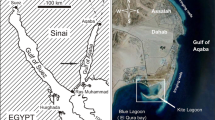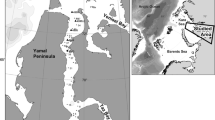Abstract
The aim of this work is to improve the knowledge of the mollusc fauna of Terra Nova Bay (Ross Sea), on the basis of more than 100 stations sampled from 25 to 1100 m depth, during Italian Antarctic Expeditions (austral summers 1987/1988, 1989/1990, 1993/1994, 1994/1995, 1995/1996 and 1997/1998). In shallow waters, gastropod fauna is represented by 31 species, among which Neobuccinum eatoni, Onoba gelida, Powellisetia deserta, Philine cf. apertissima and Austrodoris kerguelenensis are the most abundant, while among bivalves (25 species) the commonest species are Adamussium colbecki, Yoldia eightsi, Laternula elliptica and “Montacuta”nimrodiana. At present, most of the Antarctic mollusc species are known as having circumantarctic distribution and are considered eurybathic. Moreover, in general, only scarce data are available on their substrate preferences, because of their occurrence in scattered sampling stations with different sediment features. In the present study carried out at Terra Nova Bay, based on a relatively high number of stations, a clear zonation of mollusc assemblages is shown, according to depth and sediment features. While gastropods characterise the superficial algal belts dominated by the red algae Iridaea cordata and Phyllophora antarctica, bivalve distribution is wider. Adamussium colbecki is the dominant species in the upper 100 m, both on soft and hard bottoms, if the slope is suitable (density up to 40–60 ind./m2). On coarse sands, this species is frequently accompanied by L. elliptica (density <20 ind./m2), while Y. eightsi characterises organic- enriched bottoms (density 70–80 ind./m2). Below 200 m depth Adacnarca nitens, Limatula hodgsoni, “Montacuta”nimrodiana and Mysella gibbosa are commonly found on relatively coarse sediments, while Thyasira dearborni and Yoldiella ecaudata prefer muddy bottoms. In order to identify bivalve assemblages, multivariate analyses were applied to stations grouped into depth ranges, sediment features and location. While shallow bathymetric ranges (25–200 m) are clearly defined, deeper clusters of stations are more influenced by the high degree of eurybathy of most of the species and by the scattered distribution of the sediment particle sizes.
Similar content being viewed by others
Author information
Authors and Affiliations
Additional information
Accepted: 18 September 1999
Rights and permissions
About this article
Cite this article
Cattaneo-Vietti, R., Chiantore, M., Schiaparelli, S. et al. Shallow- and deep-water mollusc distribution at Terra Nova Bay (Ross Sea, Antarctica). Polar Biol 23, 173–182 (2000). https://doi.org/10.1007/s003000050024
Issue Date:
DOI: https://doi.org/10.1007/s003000050024




